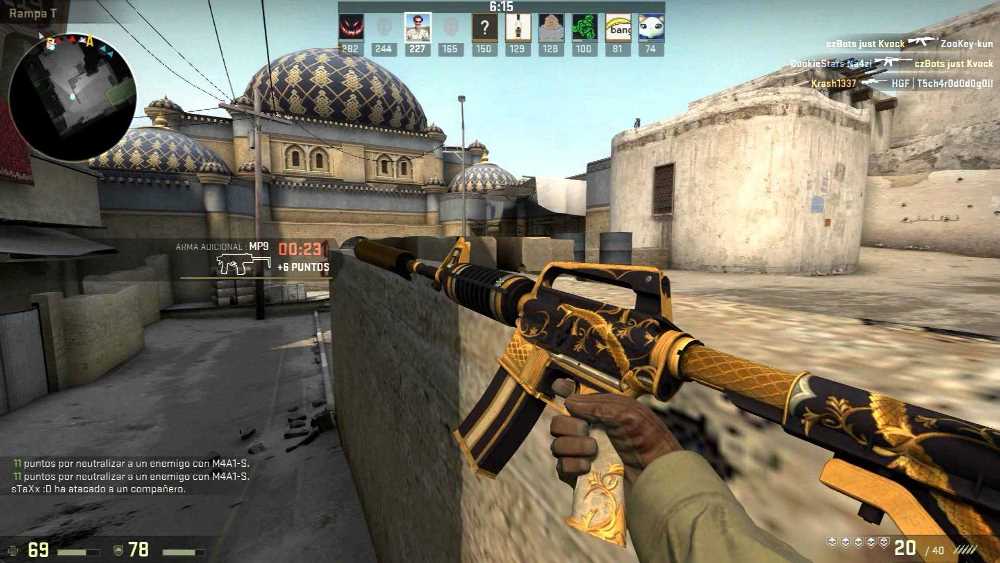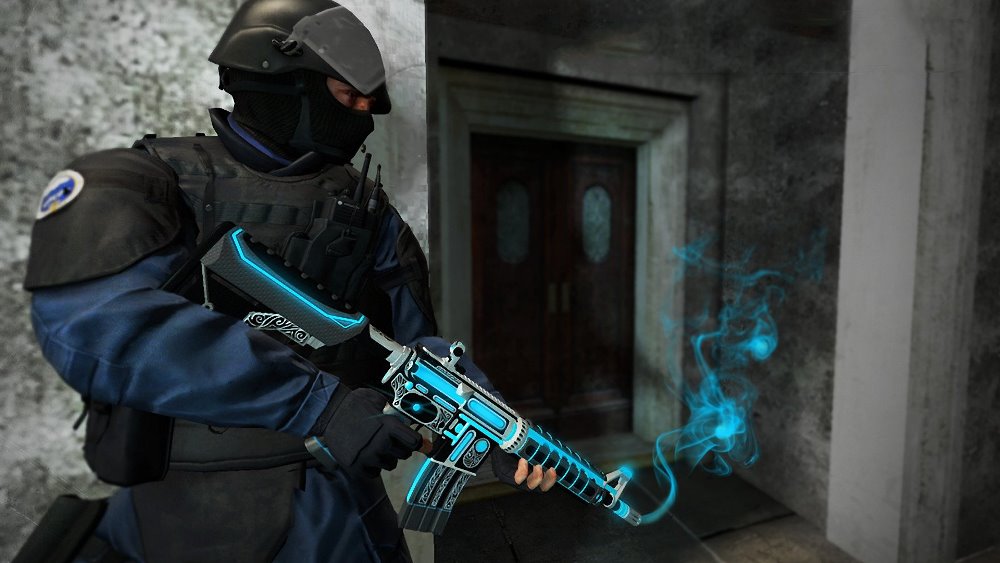
In the context of Counter-Strike: Global Offensive (CS:GO), the method of play and tactics refer to different aspects of the game.
Method of Play:
- The method of play in CS:GO generally refers to the overall style and approach adopted by a team during a match. It encompasses the team’s playstyle, strategies, and execution of game plans. The method of play can vary significantly between teams and can be categorized into different styles, such as aggressive, defensive, or balanced.
- Aggressive Play: Teams that employ an aggressive method of play focus on constant map control, fast-paced executions, and early engagements with opponents. They prioritize taking control of key areas on the map and aggressively challenging their opponents in order to gain an advantage.
- Defensive Play: Teams that favor a defensive method of play often focus on holding angles, setting up crossfires, and playing more cautiously. They prioritize holding defensive positions, denying map control to opponents, and capitalizing on the opponent’s mistakes.
- Balanced Play: Some teams adopt a more balanced approach, combining elements of both aggression and defense. They adapt their method of play based on the situation and opponent, switching between aggressive pushes and defensive setups as needed.
Tactics:
- Tactics in CS:GO refer to the specific strategies and plans that teams employ to achieve their objectives within the game. Tactics involve the coordination of players, use of utility (smokes, flashes, grenades), and the execution of well-coordinated maneuvers to outsmart opponents. These tactics can be applied on both the attacking (Terrorist) and defending (Counter-Terrorist) sides.
- On the Terrorist side, tactics can involve setting up fakes, executing rushes, performing split attacks, or executing well-coordinated strategies to plant the bomb and defend it until it explodes.
- On the Counter-Terrorist side, tactics may include holding defensive positions, setting up crossfires, rotating players efficiently, retaking bombsites, or using utility to delay and disrupt the enemy’s execution.
Tactics in CS:GO are often developed through careful analysis of opponents’ tendencies, map control, economy management, and communication among teammates. They require a deep understanding of the game mechanics, map layouts, and the ability to adapt on the fly.
In summary, the method of play refers to the overall style and approach of a team, while tactics focus on the specific strategies and maneuvers employed to achieve objectives within the game. Both aspects are crucial for success in CS:GO, and teams often combine their preferred method of play with a variety of tactics to outsmart and outplay their opponents.

Aggressive Play
Aggressive play in CS:GO is a method of play that involves actively seeking engagements with opponents, pushing for map control, and applying constant pressure on the opposing team. Teams that employ an aggressive playstyle prioritize early confrontation, fast-paced executions, and proactive decision-making.
Here are some key characteristics and strategies associated with aggressive play in CS:GO:
- Early Map Control: Aggressive teams aim to gain control of key areas on the map as quickly as possible. This can involve pushing aggressively into certain areas, such as bombsites, chokepoints, or high-traffic areas, to catch opponents off guard or disrupt their default strategies.
- Fast Executions: Aggressive teams often execute their strategies quickly, aiming to catch opponents off guard and overwhelm them with speed and firepower. They may utilize well-rehearsed set pieces, execute rushes, or perform quick splits to create chaos and exploit any weaknesses in the opposing team’s defense.
- Entry Fragger: Aggressive playstyle typically requires a skilled entry fragger who leads the team’s pushes, aiming to secure the initial kills and create openings for the rest of the team. The entry fragger is usually supported by teammates who provide flashes, smokes, and other utility to facilitate successful entries.
- Aggressive Trading: Aggressive teams prioritize quick trades when a teammate gets eliminated. They react swiftly to neutralize opponents who eliminate their teammates, ensuring that the man disadvantage is minimized and the pressure is maintained.
- Constant Pressure and Information: Aggressive teams often apply relentless pressure on the opposing team throughout the match. They actively seek engagements, utilize aggressive peeks and pushes to gather information, and force opponents to make hasty decisions or be overwhelmed.
- Economy Denial: Aggressive playstyle can also involve actively disrupting the opponent’s economy by winning rounds decisively, forcing multiple rebuys, or applying economic pressure through aggressive force buys or early round buys.
- Mind Games: Aggressive teams may also employ mind games to keep opponents guessing and off-balance. This can involve faking strategies, executing unexpected maneuvers, or utilizing creative utility usages to create confusion and exploit gaps in the opponent’s defense.
However, it’s important to note that aggressive play comes with its own risks. It requires good individual aim, coordination, and communication among teammates to be effective. Teams employing aggressive playstyles should also be prepared to adapt and adjust their strategies if opponents successfully counter their aggression.
Defensive Play
Defensive play in CS:GO is a method of play that focuses on holding defensive positions, denying map control to opponents, and capitalizing on the opponent’s mistakes. Teams that adopt a defensive playstyle prioritize careful positioning, holding angles, and using utility effectively to slow down enemy advances.
Here are some key characteristics and strategies associated with defensive play in CS:GO:
- Holding Angles: Defensive teams establish strong defensive positions and hold angles to minimize their exposure and increase their chances of getting kills. They position themselves in spots that provide good lines of sight and advantageous positions to defend bombsites or key areas on the map.
- Crossfires and Trade Fragging: Defensive play relies on setting up crossfires, where multiple teammates cover different angles, increasing the chances of securing kills and trading efficiently. This ensures that if one player gets eliminated, a teammate is ready to take their place and maintain the defense.
- Utility Usage: Defensive teams make strategic use of utility (smokes, flashes, grenades) to delay enemy advances, deny vision, or flush opponents out of advantageous positions. By effectively utilizing utility, defensive teams can buy time, disrupt enemy executions, and force opponents to use their own utility resources.
- Rotations and Communication: Defensive play requires effective communication and coordination among teammates to rotate quickly and efficiently between bombsites or to support each other when under pressure. Timely and accurate information sharing is crucial for making informed decisions and maintaining a solid defense.
- Time Management: Defensive teams are often aware of the importance of time management and aim to delay opponents’ advances. By stalling and running down the clock, they increase the pressure on the attacking team, forcing them to make quick decisions and potentially make mistakes.
- Counter-Utility and Counter-Stratting: Defensive teams analyze opponents’ strategies and tendencies, allowing them to anticipate and counter their moves. They actively look for opportunities to negate or counter the utility used by the attacking team and develop counter-strategies to exploit weaknesses in their opponents’ game plan.
- Retaking Bombsites: Defensive play involves having well-coordinated retake strategies for when the opposing team successfully plants the bomb. These strategies focus on regaining control of the bombsite by using utility effectively, coordinating peeks, and trading efficiently to eliminate the planted attackers.
It’s important to note that defensive playstyle requires patience, discipline, and good decision-making. Defensive teams should be able to adapt their defensive positions based on the opponents’ strategies and be ready to switch to more aggressive play when necessary. Effective communication and teamwork are crucial for executing defensive strategies successfully and countering the opponent’s offensive maneuvers.
Balanced Play
Balanced play in CS:GO is a method of play that combines elements of both aggression and defense, depending on the situation and the opponent’s actions. Teams that adopt a balanced playstyle aim to adapt to the flow of the game and make strategic decisions based on the information available to them.
Here are some key characteristics and strategies associated with balanced play in CS:GO:
- Tactical Flexibility: Balanced teams are capable of adjusting their playstyle and strategies according to the specific circumstances. They can seamlessly transition between aggressive pushes and defensive setups based on the information gathered and the opponent’s tendencies.
- Map Control and Information Gathering: Balanced teams prioritize gaining map control and gathering information about their opponents’ movements and strategies. This can involve executing calculated aggression to gather intel, actively contesting key areas, and applying pressure on multiple parts of the map.
- Adaptive Utility Usage: Balanced teams utilize utility strategically to support both offensive and defensive actions. They can effectively use smokes, flashes, and grenades to create opportunities for aggressive pushes or to deny map control and slow down enemy advances when playing defensively.
- Versatile Roles and Players: Balanced teams often have players who are adaptable and can switch between different roles and positions depending on the situation. This flexibility allows them to adjust their setups, strategies, and playstyles to counter specific opponents’ tactics.
- Decision-making and Mid-round Calls: Balanced play requires strong decision-making skills and the ability to make mid-round adjustments. Players and in-game leaders must analyze the current state of the round, assess the opponent’s actions, and make informed calls regarding aggression, rotations, or defensive setups.
- Economic Management: Balanced teams pay close attention to the economy of both teams and make calculated decisions regarding when to be aggressive or defensive based on the available resources. They adapt their buy strategies and utility usage to maintain a balanced economic position and maximize their chances of success.
- Timing and Coordination: Balanced teams emphasize timing and coordination in executing strategies. They coordinate pushes, retakes, and rotations to ensure that players are working together effectively and maximizing their chances of success in each situation.
Balanced playstyle is about finding the right balance between aggression and defense, adapting to the changing dynamics of the game, and making strategic decisions based on the available information. It requires a deep understanding of the game mechanics, map control, opponent analysis, and effective communication and teamwork among players.


